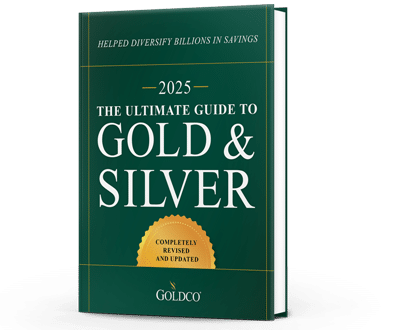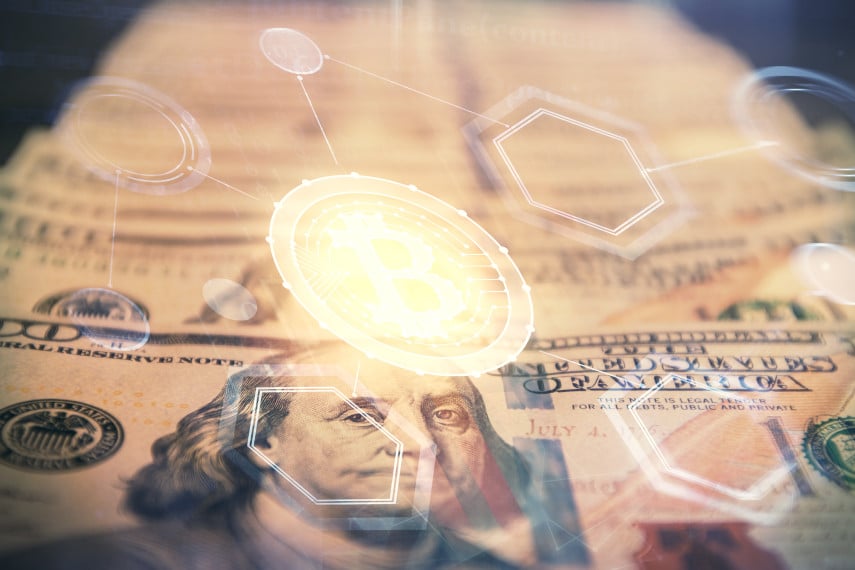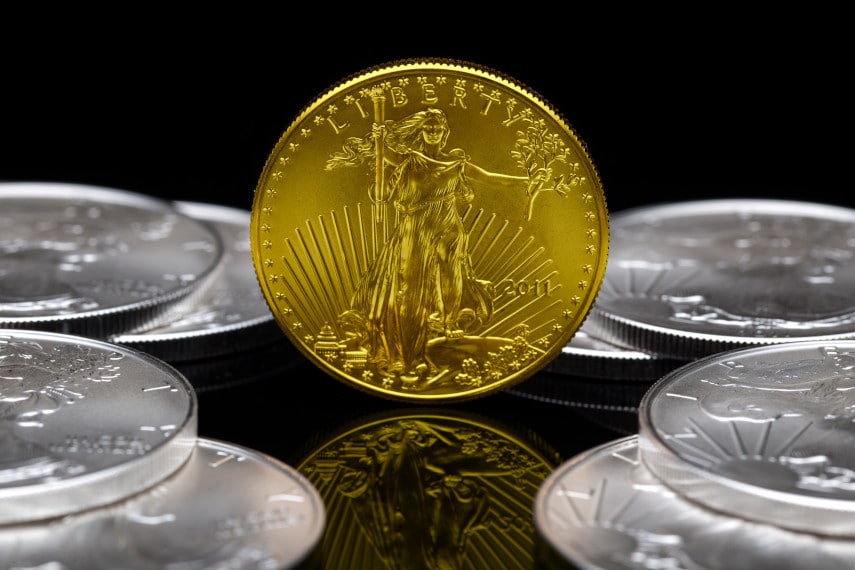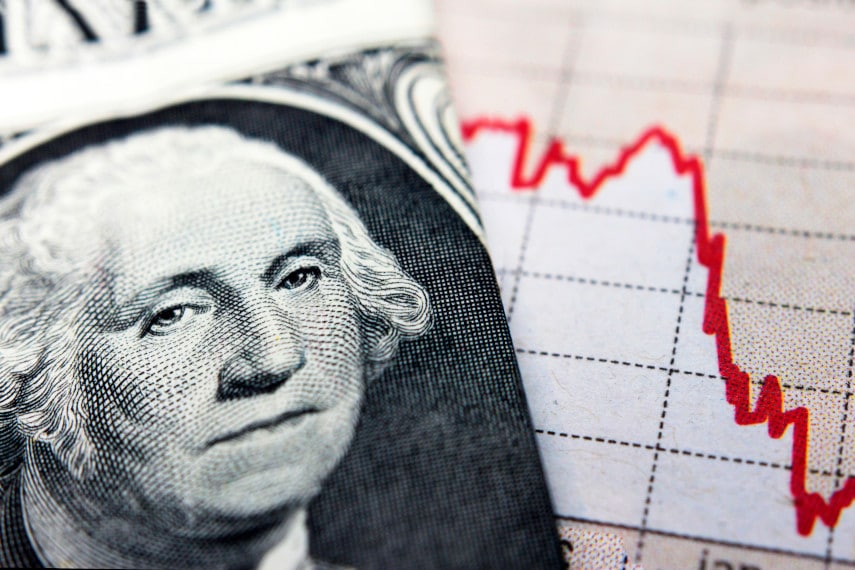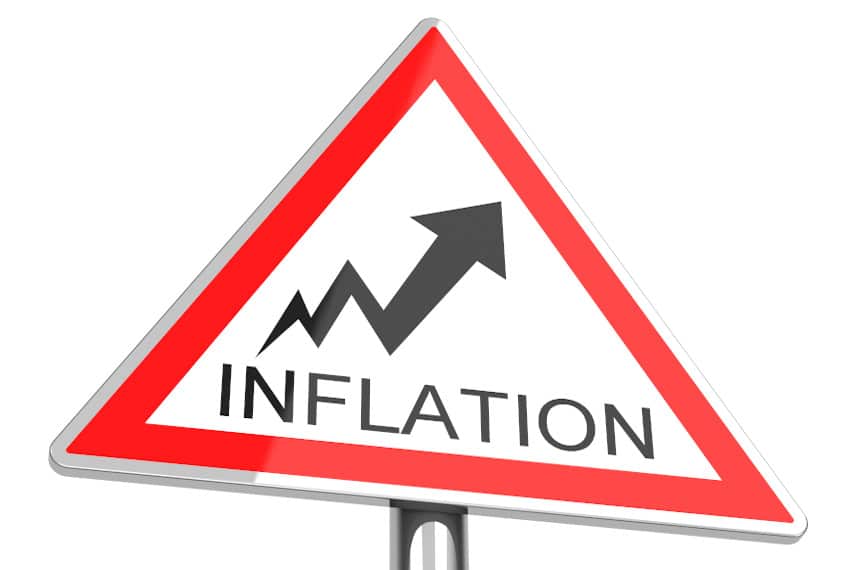
For over a decade, official government inflation figures have told the story that inflation is stuck around 2%. No matter what the Federal Reserve did to try to boost inflation, and how many trillions of dollars of quantitative easing the Fed poured into the financial system, inflation numbers just wouldn’t budge. But that could be starting to change.
While prices continued to increase over the past decade, the past year has seen massive increases across the board, from houses to gasoline to food. More and more Americans are feeling the pinch to their pocketbooks when they go to the store or fill up their car. And the impact that inflation has on them could only get worse from here.
What has been really unusual about the current situation is that the voices you would expect to downplay the impact of inflation and its dangers have instead been among those sounding the alarm. Democrats who you would have expected to have defended Biden’s stimulus spending and cooed over his infrastructure plan have instead been sounding the warning bells about coming inflation.
Is this part of some internecine squabble within the Democratic Party, with those having favored non-Biden candidates now trying to get back at Biden? Or have they really wised up and realized the dangers that inflation now poses to the US economy?
Fed officials too are beginning to sound the warning bells, and it’s up to us to pay attention. And for you and your investments, the onset of inflation, its overall rate, and the acceleration of its growth could have a major impact on the value of your assets.
Americans have already faced an uphill battle when it comes to affording the necessities of life once they leave the workplace. With Social Security benefits having barely budged over the past decade and stock markets only belatedly offering investors some bit of asset growth, many in retirement have struggled to make ends meet. Rising inflation could harm them, and negatively impact the well-being of those about to enter retirement.
The Debate Within the Federal Reserve
As the Federal Reserve is in charge of US monetary policy, its actions impact the economy to a greater degree than any other institution. And within the Fed right now there are a wide range of views about inflation, whether it’s actually rising, and how high it might get.
Fed Chairman Jay Powell has already stated that he believes inflation isn’t behind the rising prices we’re seeing throughout the economy. Given the rise in the money supply over the past year, that seems to be an incomprehensible statement. But when you remember that Powell was trained as a lawyer and not as an economist, it begins to make sense.
Powell’s sense is that any price rises are merely transitory, that inflation won’t rise, and that we’ll see a return to normal shortly. But other Fed officials aren’t so sanguine. Fed Vice Chairman Richard Clarida has acknowledged that we’ll see higher inflation this year, but he believes that inflation itself is transitory. He did admit, however, that if inflation hasn’t receded by the end of the year then that would be good evidence that the rise in inflation isn’t transitory.
Even if inflation is rising, not all Fed officials are unhappy with that. Take, for instance, uber-dove Neel Kashkari, President of the Minneapolis Fed. He has stated that he wouldn’t be worried if inflation rose to a 4% annual rate. At that rate, prices would double every 18 years. According to Kashkari, that 4% rate wouldn’t concern him, depending on the reason it happened. In other words, if the Fed intended for inflation to run that high, that would be okay with him.
One of the interesting things to note about Kashkari’s stance is that he premises it on his belief that the government’s official unemployment rate understates the actual employment rate. That’s not a terribly uncommon view today. But many who believe the unemployment rate understates unemployment also believe that the government’s inflation figures underestimate the actual rate of price increases. Curiously, Kashkari doesn’t see this. If he did, perhaps he would realize that Americans today are already seeing 4% or greater price increases, and have been for a while.
Other Dissenting Voices
One of the most prominent people to express concern about what is going on is Larry Summers, former Treasury Secretary under President Clinton. In a recent interview, Summers expressed his concern that Biden’s fiscal stimulus has been “substantially excessive.” It’s not what one would have expected to hear from Summers, whose Democratic credentials are impeccable. This might have been criticism we would expect to hear from him of President Trump’s policies, but not of Biden’s policies.
Summers isn’t a lone voice either, with Democratic-leaning economist Mark Zandi warning of inflation just around the corner. Zandi had previously viewed the Fed’s quantitative easing policies in the aftermath of the 2008 crisis in a favorable light. With such prominent names expressing hesitation at Biden’s actions, are we merely seeing dissension within the ranks, or has hell frozen over and allowed these economists to finally see the light about the relationship between government spending and inflation?
What the Future Holds
If economists who previously would have been among those downplaying inflation are now starting to warn about it, it’s probably a sign that we’re going to be in for some serious pain. Many Americans are already seeing their cost of living increase. Those who hoped to buy a house are seeing themselves priced out of the market. Those who have growing families are seeing their monthly grocery bills rise and rise. And those nearing retirement are being faced with the prospect that their hard-earned retirement savings may not go as far as they hoped they would.
If you’ve built up a sizable nest egg, now is the time to start thinking about protecting what you’ve saved and invested. Imagine the feeling of working hard for decades, saving and investing diligently, and seeing all your hard work and effort eaten away by inflation. Imagine the sinking feeling in your gut knowing that 30 or 40 years worth of toil could be undone in such a short time, and through no fault of your own. Imagine taking a look at your retirement savings that you thought were going to last you to the end of your life, and realizing that you may very well run out of money before you die.
More and more investors today are coming to grips with the reality that the economic environment of the next 20-30 years, the time in which they will live in retirement, will look very different from the last 20-30 years. Low economic growth, higher inflation, and reduced purchasing power of their dollars could make retirement far less attractive in the future than it is now. And that’s why more and more investors are taking steps to safeguard their investments, attempting to ensure that their assets will continue to outpace inflation.
One of the ways they do that is by investing in gold and silver. Gold and silver have a long history as monetary metals and investment assets, and they have protected the financial well-being of millions of people over the centuries. Today the role they play in protecting investment portfolios can’t be understated, and their performance over the last several years can’t be overlooked.
You may not realize it, but over the past 20 years both gold and silver have handily outgrown stock markets. And that’s during an era in which stock markets have still been one of the go-to assets. In a future that could see a return to the stagflation of the 1970s and middling stock markets, gold and silver could do even better over the next 20 years than they have over the past 20 years.
If you’re looking to protect your retirement savings, particularly against the ravages of inflation, isn’t it time that you thought about gold and silver? Tried and true assets like gold and silver have helped many investors protect their wealth over the years, and they can help you too. Call the experts at Goldco today to find out how.

